Last week, the Spring Festival CES held in the technology circle was held in the United States. Look at the current news headline and just dare to claim anything as a black technology, shocking the world.
Especially in this small circle of television, some of the first manufacturers to go abroad do not know whether they have not seen the market. They have done television to the level of another family two or three years ago, and they have to say that their products are overwhelming. As a media person who still wears pants, I really don't know what words I think of.
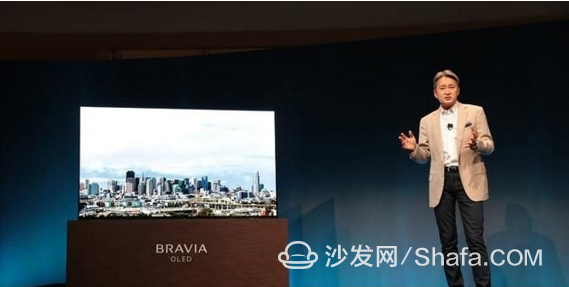
This year's CES TV field, a truly good product that integrates technology and industrial design, is nothing more than Sony's BRAVIA OLED A1E and LG's SIGNATURE W. Today we will talk about the former.
industrial design

From the front, this product is very minimalistic, looks like a large picture frame, the front is just a pure screen.
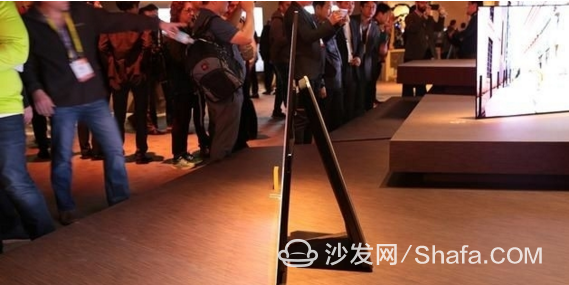
Tian Xinghong, the chief creative director of Sony Creative Center's first studio, told Sina that the original intention of this TV design was to give the user an undisturbed experience. So you can't see the speakers, brackets, connectors, etc. Even Sony LOGO uses a non-reflective material, and as to the lower left corner.
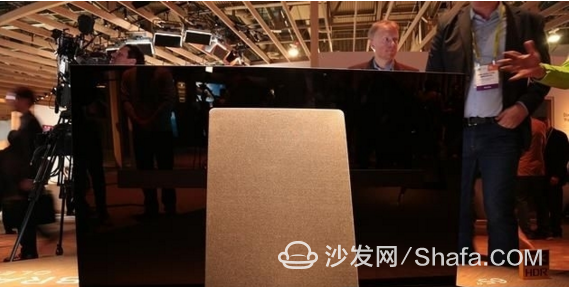
Looking back, the center of a fabric material bracket, support the screen, hidden under a small part of the raised area, which is the TV's motherboard, chip location.

A horizontal hurdle played a solid role, with a BRAVIA LOGO printed on it.

Sony does not use a "borderless" design that can be used on a race car, but the screen frame and body thickness are less than the thickness of an iPhone.
The first time I saw this product, I had the best curiosity. The fuselage did not have any interfaces. Where did the power supply and HDMI cable come from?
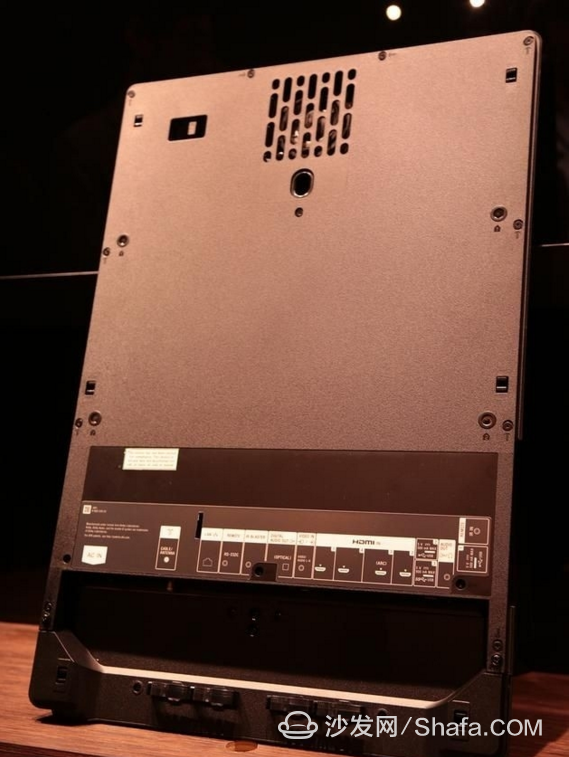
The answer is hidden in a fabric stand. After opening the cover, it can be found that the bottom power supply, HDMI, USB and other interfaces are hidden. At the same time, in order to neutralize daily use, there is a hidden open area at the bottom right of the bracket. After removing the partition, there is also a USB and an IR input interface.

However, the fabric bracket not only supports the TV and hides the interface, but also has four screw holes at the waist for mounting on the bracket. There is a switch in the upper left, which opens the rear bracket and returns it to the fuselage, which becomes a wall-hanging form.
In addition, the area located in the upper middle is where the subwoofer is located. However, it is only used as a supplement to the sound and is not the main speaker of the TV.
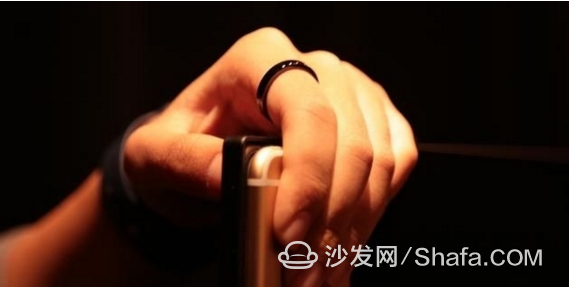
Then introduced a long time, where is the TV speaker? The answer is that TV did not design speakers at all. So are we going to see silent films on this screen? No, not because the TV has a subwoofer, but the whole screen can play sounds in addition to the display content.
Sound quality
The essence of sound is the wave produced by the vibration of an object. Other TVs use the sound unit to shake, and Sony simply changes the vibration source from the speaker to the screen.
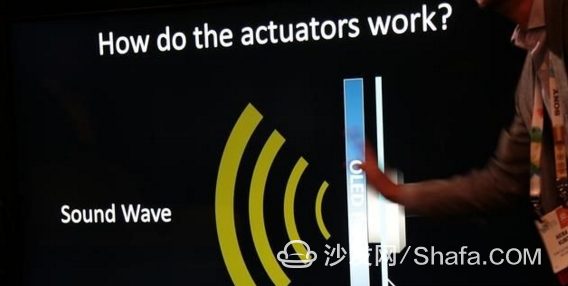
Sony named the technology Acoustic Surface, which is called screen speaker technology. Really think of it, the screen can also be used as a source, in fact LG Display.
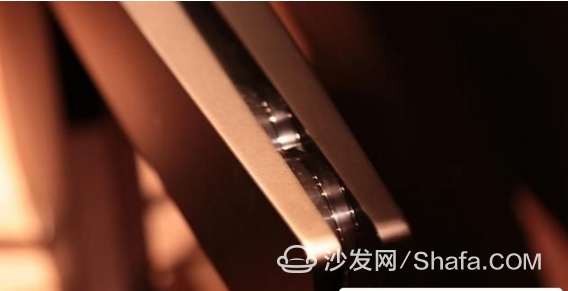
As we all know, the structure of the liquid crystal is relatively complex, and it is divided into a backlight layer and a liquid crystal material layer, and the vibration affects the deflection of the liquid crystal molecules. Therefore, the technology of generating sound by screen vibration can only be applied to OLEDs with a relatively simple structure.
So since LGD invented this technology, what has Sony done? It seems that LGD discovered that meat can be eaten in addition to cooking. What Sony does is to make the cooking too tasty.

Acoustic Surface simply speaking, is the use of left and right vibration sources, traction screen vibration. In this way, the spatial sense of the sound will be greatly improved compared to the speaker integrated on the television or the SoundBar alone. You can clearly feel that the sound is coming from the direction of the screen to you, not from a narrow area.

However, it is not difficult to make the screen sound, so it sounds like a complicated issue. Just from the principle, the advantages of the screen directly vibrating sound are described. But a screen, but also to ensure the sense of direction of the sound, this is a more difficult problem.
Sony uses two sets of vibration sources, one for the other, to work together to achieve the sensation of the left and right channels. For example, a truck moves from the left side of the screen to the right side. The sound should also come out from the left and gradually move to the right side of the screen. This is the sense of direction of the sound, this product has been perfectly resolved. But two groups of vibration sources, how to solve the mutual interference on the same screen, this belongs to the stage of commercial confidentiality.

Will frequent vibrations affect the screen? Sony engineers have said that they have done a lot of experiments and that there will be no problems. Moreover, the physical properties of the OLED panel are fixed, and it is hardly affected by vibration.
So this TV, on a different material shape of the table, will affect the sound quality it? Theoretically there will be, but the actual experience of the human ear can not distinguish basically. Because the attenuation is very large during the transmission of vibrations from the screen to the second medium, the transmitted waves are basically sound waves that the human ear cannot recognize.
Quality
From a few years ago, Sony's TV was squeezing Sharp in the field of high-end TV. It can be seen that the quality of a TV picture is not the only basic factor in its own panel technology. The panel's tuning and signal processing are also not allowed. Or lack of another factor.
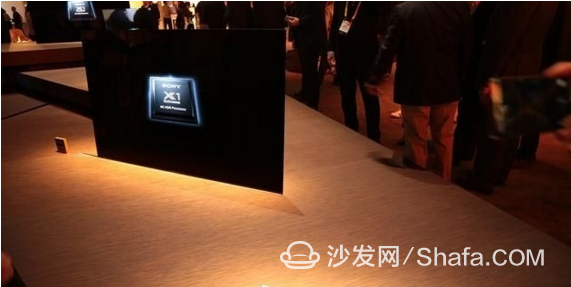
In the case of the panel-entry LG Display, Sony has worked hard on the image analysis process. This will require a detailed discussion on the X1 advanced image processing chip.

In addition to the input signal processing, the X1 has a variety of built-in panel drivers. On the basis of these, there are more secondary analysis of the layer panel images. For example, if the screen can represent brightness from 0 to 100, but the brightness of the input signal is 10 to 110, so that the 0 to 10 part becomes 10, and the part that exceeds 100 is changed. Into 100. If you count images back and forth, you lose a lot of detail. The addition of the second analysis can solve this problem and reduce each brightness by 10 standards, so that the images displayed are more detailed and richer in detail.
In fact, even though 4K TVs have become popular, 4K signals are still very few. Under the 4K signal, after each basic image processing, the display effect is quite satisfactory. The analysis and processing of low-standard signals is the place where the gap is currently opened. First, let's talk about HDR dynamic item-by-item remodeling technology.

Before we say this, we have to talk briefly about what HDR is hot on TV recently. HDR is a new generation of gray standard proposed by SDR. To put it simply, for example, the previous SDR divided pure white and pure black into about 5 levels, which are 3, 5, 7, 9, and 11, respectively. The HDR standard divides pure white to pure black into 15 levels, which are 1, 2, 3...15. Not only did the number of copies increase, but the total span also increased.
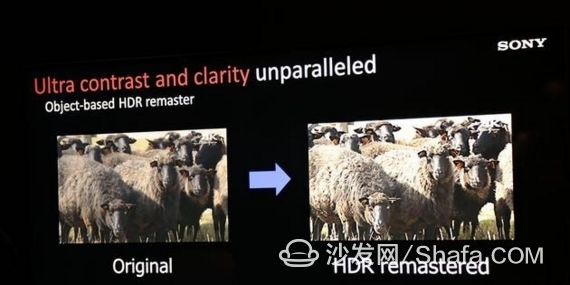
So what is the experience of traditional SDR signal input to HDR TV? The most obvious is the black in the SDR, which turns into a dark gray in HDR. As you can imagine, if you are watching the night scene on TV, the night sky is dark gray and there will be more drama.

The X1 chip scales the SDR signal grayscale to the HDR level, that is, the original dark gray is pulled to pure black, and then processes different brightnesses in order, so that the visual experience of the image is closer to the signal originally intended to be expressed. Content. In particular, the night sky, contrast between light and shade, light intensity, and halo will be more vivid.
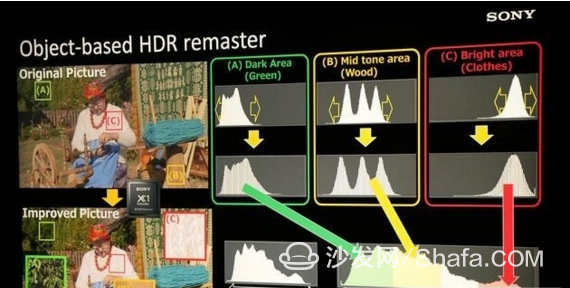
Second, talk about picture noise reduction. A lot of video, in fact, when collecting, due to equipment problems, noise may appear in the image. For example, when using a mobile phone to shoot night scenes, discordant color points in the sky will appear.
Sony's X1 chip can automatically determine which points noise should be smeared and which points should be preserved. For example, in a bird flying in the sky, the system will smear the discordant colors of the sky and preserve different colors of bird feathers.
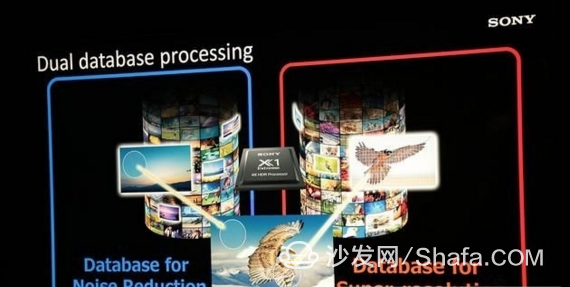
The 14bit smooth gradation technology that also appeared on the Z9D has been preserved. That is, the phenomenon of interrupting the layer during the color transition is smoothed out.
Price & other
Although the official has not yet determined, but from this TV exhausted Sony display technology all over the place, how prices have to be more than the current Internet TV 0.
Sony's current positioning of its own products is not so simple. Gao Qiaoyang, chairman of Sony China, told Sina.com that there are many different consumers in China. For some consumers, the cost-effectiveness has a decisive factor. The other part of consumers is not only concerned about cost-effectiveness, but will pay more attention to the performance of the product for sound quality.
He believes that with the development of China's economy and the upgrading of consumption, there will be more and more consumers in the latter category in the Chinese market. From the earnings reports of Sony in recent quarters, it can be seen that the decision to provide high-end products for these consumers has achieved initial success. Sony will continue to maintain this strategy and focus on providing high-end products.
So Sony's introduction of OLED TVs means that it has already stood a good team? According to Mr. Mujing, vice president of Sony Vision Products, this is not the case. In addition to Sony's OLED products, Sony also introduced the X93E LCD TV.
He believes that Sony's advantage lies in signal optimization. For manufacturers without self-built panels, Sony has also studied the display technology on the market. The ultimate goal is to enhance the quality and sound quality of television. It does not matter what method is adopted.
In fact, this is indeed the case. At present, there are three groups in the television circle, quantum dot liquid crystal, OLED, and laser projection. Those who tore off are nothing more than holding their screen production factories or have no advantage in other fields. They all have the suspicion of selling their melons.
As for black cats and white cats, it is the most important to catch rats.
The last question, Sony's own strongest LCD TV Z9D and OLED TV A1E in the end which is stronger? Mujing said that he is on the same route. The opinion of Lao Yang is that I prefer A1E to industrial design. On the picture quality, this will have to be broken down.
Smart TV/box information can focus on smart TV information network sofa butler (http://), China's influential TV box and smart TV website, providing information, communication, TV boxes, smart TVs, smart TV software, etc. Answering questions.
Especially in this small circle of television, some of the first manufacturers to go abroad do not know whether they have not seen the market. They have done television to the level of another family two or three years ago, and they have to say that their products are overwhelming. As a media person who still wears pants, I really don't know what words I think of.

This year's CES TV field, a truly good product that integrates technology and industrial design, is nothing more than Sony's BRAVIA OLED A1E and LG's SIGNATURE W. Today we will talk about the former.
industrial design

From the front, this product is very minimalistic, looks like a large picture frame, the front is just a pure screen.

Tian Xinghong, the chief creative director of Sony Creative Center's first studio, told Sina that the original intention of this TV design was to give the user an undisturbed experience. So you can't see the speakers, brackets, connectors, etc. Even Sony LOGO uses a non-reflective material, and as to the lower left corner.

Looking back, the center of a fabric material bracket, support the screen, hidden under a small part of the raised area, which is the TV's motherboard, chip location.

A horizontal hurdle played a solid role, with a BRAVIA LOGO printed on it.

Sony does not use a "borderless" design that can be used on a race car, but the screen frame and body thickness are less than the thickness of an iPhone.
The first time I saw this product, I had the best curiosity. The fuselage did not have any interfaces. Where did the power supply and HDMI cable come from?

The answer is hidden in a fabric stand. After opening the cover, it can be found that the bottom power supply, HDMI, USB and other interfaces are hidden. At the same time, in order to neutralize daily use, there is a hidden open area at the bottom right of the bracket. After removing the partition, there is also a USB and an IR input interface.

However, the fabric bracket not only supports the TV and hides the interface, but also has four screw holes at the waist for mounting on the bracket. There is a switch in the upper left, which opens the rear bracket and returns it to the fuselage, which becomes a wall-hanging form.
In addition, the area located in the upper middle is where the subwoofer is located. However, it is only used as a supplement to the sound and is not the main speaker of the TV.

Then introduced a long time, where is the TV speaker? The answer is that TV did not design speakers at all. So are we going to see silent films on this screen? No, not because the TV has a subwoofer, but the whole screen can play sounds in addition to the display content.
Sound quality
The essence of sound is the wave produced by the vibration of an object. Other TVs use the sound unit to shake, and Sony simply changes the vibration source from the speaker to the screen.

Sony named the technology Acoustic Surface, which is called screen speaker technology. Really think of it, the screen can also be used as a source, in fact LG Display.

As we all know, the structure of the liquid crystal is relatively complex, and it is divided into a backlight layer and a liquid crystal material layer, and the vibration affects the deflection of the liquid crystal molecules. Therefore, the technology of generating sound by screen vibration can only be applied to OLEDs with a relatively simple structure.
So since LGD invented this technology, what has Sony done? It seems that LGD discovered that meat can be eaten in addition to cooking. What Sony does is to make the cooking too tasty.

Acoustic Surface simply speaking, is the use of left and right vibration sources, traction screen vibration. In this way, the spatial sense of the sound will be greatly improved compared to the speaker integrated on the television or the SoundBar alone. You can clearly feel that the sound is coming from the direction of the screen to you, not from a narrow area.

However, it is not difficult to make the screen sound, so it sounds like a complicated issue. Just from the principle, the advantages of the screen directly vibrating sound are described. But a screen, but also to ensure the sense of direction of the sound, this is a more difficult problem.
Sony uses two sets of vibration sources, one for the other, to work together to achieve the sensation of the left and right channels. For example, a truck moves from the left side of the screen to the right side. The sound should also come out from the left and gradually move to the right side of the screen. This is the sense of direction of the sound, this product has been perfectly resolved. But two groups of vibration sources, how to solve the mutual interference on the same screen, this belongs to the stage of commercial confidentiality.

Will frequent vibrations affect the screen? Sony engineers have said that they have done a lot of experiments and that there will be no problems. Moreover, the physical properties of the OLED panel are fixed, and it is hardly affected by vibration.
So this TV, on a different material shape of the table, will affect the sound quality it? Theoretically there will be, but the actual experience of the human ear can not distinguish basically. Because the attenuation is very large during the transmission of vibrations from the screen to the second medium, the transmitted waves are basically sound waves that the human ear cannot recognize.
Quality
From a few years ago, Sony's TV was squeezing Sharp in the field of high-end TV. It can be seen that the quality of a TV picture is not the only basic factor in its own panel technology. The panel's tuning and signal processing are also not allowed. Or lack of another factor.

In the case of the panel-entry LG Display, Sony has worked hard on the image analysis process. This will require a detailed discussion on the X1 advanced image processing chip.

In addition to the input signal processing, the X1 has a variety of built-in panel drivers. On the basis of these, there are more secondary analysis of the layer panel images. For example, if the screen can represent brightness from 0 to 100, but the brightness of the input signal is 10 to 110, so that the 0 to 10 part becomes 10, and the part that exceeds 100 is changed. Into 100. If you count images back and forth, you lose a lot of detail. The addition of the second analysis can solve this problem and reduce each brightness by 10 standards, so that the images displayed are more detailed and richer in detail.
In fact, even though 4K TVs have become popular, 4K signals are still very few. Under the 4K signal, after each basic image processing, the display effect is quite satisfactory. The analysis and processing of low-standard signals is the place where the gap is currently opened. First, let's talk about HDR dynamic item-by-item remodeling technology.

Before we say this, we have to talk briefly about what HDR is hot on TV recently. HDR is a new generation of gray standard proposed by SDR. To put it simply, for example, the previous SDR divided pure white and pure black into about 5 levels, which are 3, 5, 7, 9, and 11, respectively. The HDR standard divides pure white to pure black into 15 levels, which are 1, 2, 3...15. Not only did the number of copies increase, but the total span also increased.

So what is the experience of traditional SDR signal input to HDR TV? The most obvious is the black in the SDR, which turns into a dark gray in HDR. As you can imagine, if you are watching the night scene on TV, the night sky is dark gray and there will be more drama.

The X1 chip scales the SDR signal grayscale to the HDR level, that is, the original dark gray is pulled to pure black, and then processes different brightnesses in order, so that the visual experience of the image is closer to the signal originally intended to be expressed. Content. In particular, the night sky, contrast between light and shade, light intensity, and halo will be more vivid.

Second, talk about picture noise reduction. A lot of video, in fact, when collecting, due to equipment problems, noise may appear in the image. For example, when using a mobile phone to shoot night scenes, discordant color points in the sky will appear.
Sony's X1 chip can automatically determine which points noise should be smeared and which points should be preserved. For example, in a bird flying in the sky, the system will smear the discordant colors of the sky and preserve different colors of bird feathers.

The 14bit smooth gradation technology that also appeared on the Z9D has been preserved. That is, the phenomenon of interrupting the layer during the color transition is smoothed out.
Price & other
Although the official has not yet determined, but from this TV exhausted Sony display technology all over the place, how prices have to be more than the current Internet TV 0.
Sony's current positioning of its own products is not so simple. Gao Qiaoyang, chairman of Sony China, told Sina.com that there are many different consumers in China. For some consumers, the cost-effectiveness has a decisive factor. The other part of consumers is not only concerned about cost-effectiveness, but will pay more attention to the performance of the product for sound quality.
He believes that with the development of China's economy and the upgrading of consumption, there will be more and more consumers in the latter category in the Chinese market. From the earnings reports of Sony in recent quarters, it can be seen that the decision to provide high-end products for these consumers has achieved initial success. Sony will continue to maintain this strategy and focus on providing high-end products.
So Sony's introduction of OLED TVs means that it has already stood a good team? According to Mr. Mujing, vice president of Sony Vision Products, this is not the case. In addition to Sony's OLED products, Sony also introduced the X93E LCD TV.
He believes that Sony's advantage lies in signal optimization. For manufacturers without self-built panels, Sony has also studied the display technology on the market. The ultimate goal is to enhance the quality and sound quality of television. It does not matter what method is adopted.
In fact, this is indeed the case. At present, there are three groups in the television circle, quantum dot liquid crystal, OLED, and laser projection. Those who tore off are nothing more than holding their screen production factories or have no advantage in other fields. They all have the suspicion of selling their melons.
As for black cats and white cats, it is the most important to catch rats.
The last question, Sony's own strongest LCD TV Z9D and OLED TV A1E in the end which is stronger? Mujing said that he is on the same route. The opinion of Lao Yang is that I prefer A1E to industrial design. On the picture quality, this will have to be broken down.
Smart TV/box information can focus on smart TV information network sofa butler (http://), China's influential TV box and smart TV website, providing information, communication, TV boxes, smart TVs, smart TV software, etc. Answering questions.
Lead Acid vs. Lithium: Safety
Safety is always a primary consideration when designing a solar system, but it becomes even more important when your system is on a boat far from shore, or an RV on a remote road. Different battery chemistries have different risk factors. Obviously, abusing any type of battery can create a dangerous situation. But with normal, and perhaps even a bit of rough treatment, the different batteries have different safety concerns that need to be addressed.
- Flooded lead acid batteries have an acid and water electrolyte in the battery that has to be checked on a regular basis. During normal charging cycles, this mixture turns into a gas that needs to be vented outside. A buildup of the gas inside a vehicle or vessel can be explosive. Proper ventilation mitigates this concern. The outgassing of the battery is normal, but requires owners to regularly check to see when the electrolyte level gets low from the outgassing. If low, it needs to have more distilled water added. This runs the risk of acid spills if overfilled or overcharged. This requires you to be prepared with proper safety equipment including gloves, safety glasses, and baking soda to neutralize the acid if needed.
- Sealed lead acid batteries do not have outgassing or electrolyte levels to check, as they do not outgas. Normal battery safety measures should be followed, like checking for tight cable connections, corrosion, and preventing physical damage to the battery itself.
- Lithium batteries also do not outgas, but certain types (the ones with cobalt, known as lithium cobalt oxide or LCO) can experience thermal runaway – a condition where the battery starts to get hot, which causes it to react to the heat and get hotter and hotter until it catches on fire. LCO batteries are most commonly used in cell phones, hoverboards, and electric cars, and are generally not recommended for mobile applications.
Storage Battery Pack,Power Pack Home,Battery Storage Pack,Battery Pack Storage
Shenzhen Sunbeam New Energy Co., Ltd , https://www.sunbeambattery.com